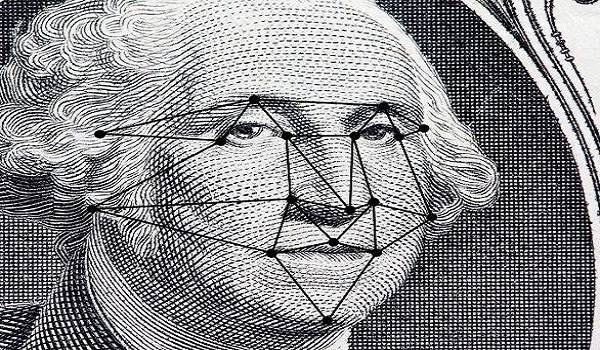The gaming world is growing daily, and the demand for video game artists, designers, and producers is higher than ever.
Many young people are showing an increased interest in entering the world of the gaming industry.
If you’re thinking of becoming a video game artist or if you want to begin learning how to draw a person in 3D, you’ve come to the right place.
In this blog post, we will share useful tips to help you become better at drawing and improve your artistic skills.
We will start by showing you how to draw a face, as most beginners find drawing faces challenging.
Now, let’s begin, shall we?
Draw the basic head shape
To illustrate the head, start off by drawing an oval shape.
Don’t overthink it. Loosen up your arm and draw a shape resembling an upside-down egg. It’s as simple as that.
More advanced artists often start by drawing the eyes, the nose and the mouth first, and then add the head shape.
However, if you’re only just beginning your artistic adventure, we suggest drawing the oval head shape first and then adding in the details. That takes us to the next step.
Draw the face
Once you draw the basic head shape, next comes illustrating the face.
The easiest way to do it is to segment the head shape you previously drew by adding several vertical and horizontal lines.
You can first draw a vertical line to divide the face into two parts. In most cases, the two halves are not identical. A person’s face can look asymmetrical because of aging, life experiences that gave them scars, blemishes, moles, and wrinkles.
Now, to segment the head shape, make sure to add a vertical line to split the shape in two.
Then, add three more horizontal lines — one should go through the middle of the head shape, the other a bit below the first line, and the third line should be placed slightly above the bottom of the chin. These lines should help you mark the places where you’ll add the eyes, the nose, and the mouth.
Draw the ears

If you’re illustrating a character with their long hair let down, in that case, the ears aren’t visible. However, drawing ears is a must for someone with a short hairstyle. The upper part of the ears should be at the same level as the eyes, while the bottom should be in line with the tip of the nose.
Draw the eyes
The eyes are the most important and exciting part of the face. They are considered a mirror of the soul and can clearly reflect emotions.
Drawing the eyes is usually easy, even if you have to draw them from different angles. They are an essential part of the expressiveness of the face, and you should, therefore, depict them carefully. Use a narrow line to form the desired eye shape and add a circle to illustrate the iris.
Draw the nose
Drawing the nose in a particular way helps define a character’s personality. Big or small, long or short — the nose can reveal a lot about a person and its character.
The tip of the nose and the wings of the nose are the most prominent elements of a nose. So, when drawing a nose, you can start from the tip and draw the line downwards to the wings and then go up until the top of the nose.
If you like, you can highlight the bridge of the nose, especially if you wish to add more eye-catching characteristics to the face you are drawing.
Of course, not all noses have the same bridge. Some are straight, while others can be more or less crooked, especially when someone has a fractured nose.
Think of how you want your character to appear and add in the nose that best matches your idea.
Draw the mouth
The easiest way to draw the mouth is to picture them as a narrow oval shape. Essentially, that’s what the basic shape of the mouth more or less looks like.
Now, you should place the mouth on the third vertical line you drew earlier.
To determine the mouth width, use the eyes as guidelines. The corners of the mouth should line up with pupils.
Drawing the mouth in a certain way allows you to portray a person’s emotions.
For example, if you draw tightly-pressed lips, a person looks angry or unimpressed.
Alternatively, if you draw a mouth slightly agape, your character looks surprised or shocked.
Be careful not to draw a too old or too young face
Painters and illustrators can sometimes make you look younger than you are by omitting wrinkles or drawing them too softly, but they can also make you appear older than your age.
While drawing a face realistically may be a challenge at first glance, you should try your best to avoid adding too many wrinkles but also be careful not to emphasize them too much.
Finding the right balance when drawing wrinkles is not easy, but you should take your time and carefully add details to your face illustrating.
Practice, practice!
When you first start drawing faces, it’s important to practice on a regular basis until you become confident in your work.
There are many ways you could practice your drawing skills. We will introduce you to a couple of the most used techniques.
One thing that could be of help is to draw self-portraits.
For example, you can use a mirror to get a better view of yourself. But if you are not up for that, you can take a picture of yourself and look at it while drawing. It’s up to you, but we think it is easier to draw from a picture because it never changes.
We also recommend drawing yourself from a side because a side view is a lot easier to draw. The shape of the face is sharper, and the forehead, the nose, the mouth and the chin are all more prominent and, therefore, easier to draw.
As you become better at drawing faces, you could invite some of your friends or relatives to draw them.
However, illustrating a person as they are standing in front of you is often challenging because they can move, change their facial expressions, become impatient and cranky while standing in a spot, etc.
It’s not easy to keep still, but if your subjects start to move, your job as an artist becomes all the more difficult.
If illustrating subjects as they stand before you seems too hard, you can always draw them by looking at their pictures. Aside from their position and expression remaining unchanged, another reason why that may be good is that the light stays the same at all times.
When you are drawing subjects live, the light changes fast, and the shadows are cast differently as the time passes, making it harder for you to shade your drawing well.
You should always be aware of where the light comes from and how the light is cast on the object you are drawing. A face drawing with perfectly accurate proportions and clean lines that lacks good shading will look quite “flat” and unnatural.
While shading may seem hard at first, make sure to practice it regularly, and you’ll become better at it in time.
Now, go grab your favorite drawing tools and start drawing!
Read also:



